Database Design and Implementation: Banking Scenario Assignment
VerifiedAdded on 2019/09/24
|5
|958
|336
Practical Assignment
AI Summary
This assignment involves designing and implementing a database for a banking system. The task requires creating an Entity-Relationship Diagram (ERD) to model customers, accounts, and transactions. Students are expected to use procedures to add new customers, accounts, and handle transactions (deposits, withdrawals, and transfers), ensuring data integrity and validation. Triggers are needed to update account balances, log customer address changes, and enforce constraints like preventing negative balances. The solution includes table statements, procedures, and examples demonstrating the functionality of adding customers, handling transactions, and updating customer addresses. The assignment emphasizes database design principles, procedural programming, and the use of triggers to maintain data consistency and integrity within the banking system. The solution provided demonstrates the creation of database objects like tables, sequences, and procedures to meet the specified requirements of the assignment.
1 out of 5
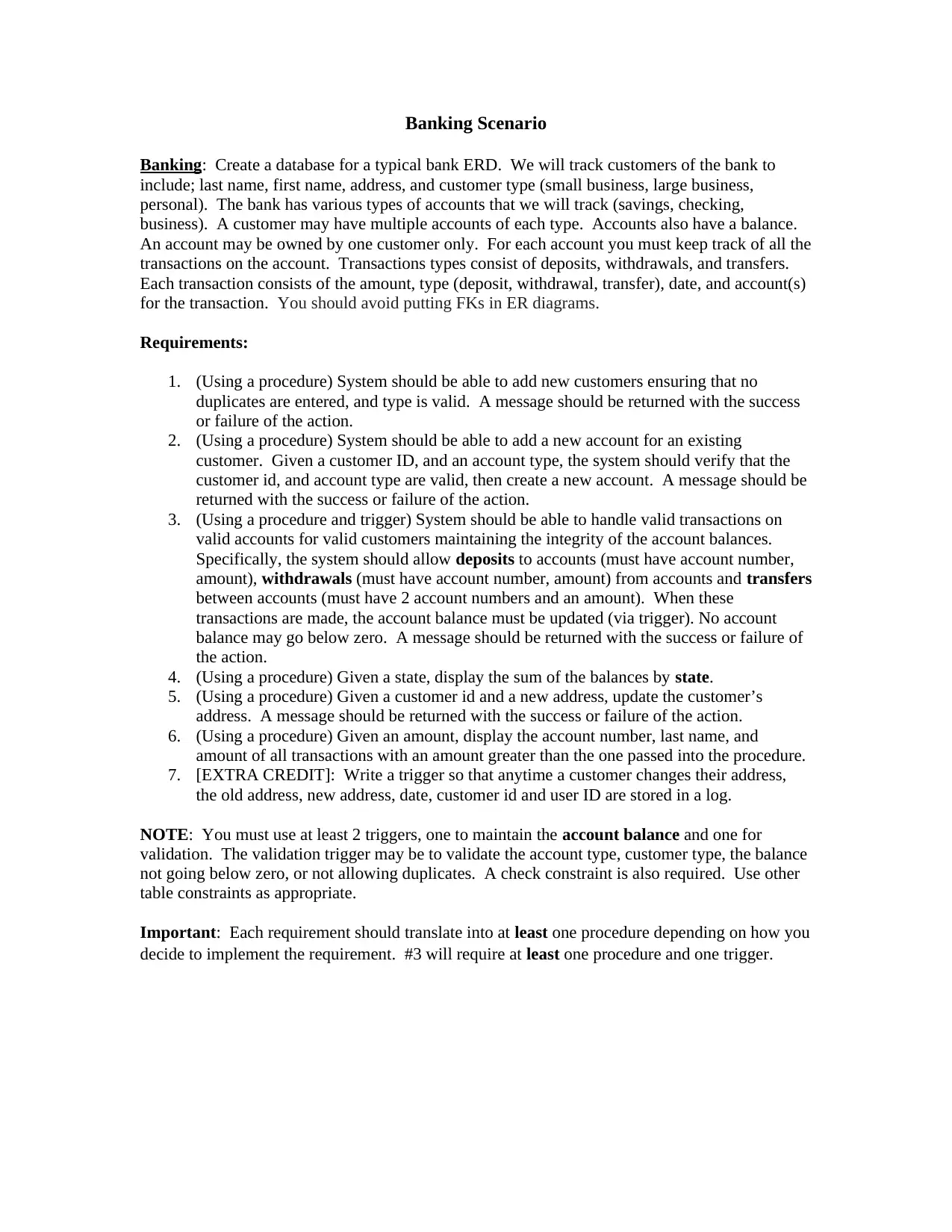
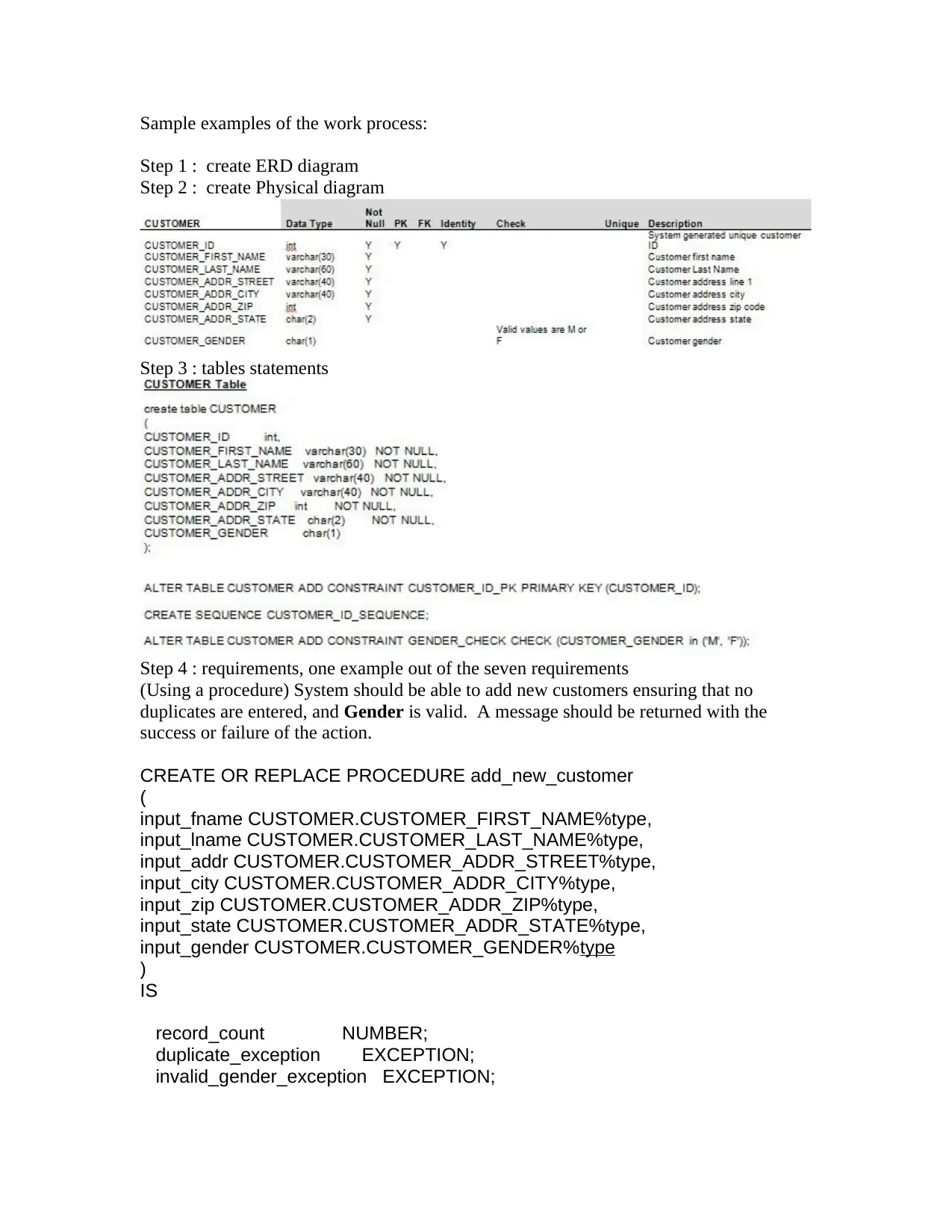
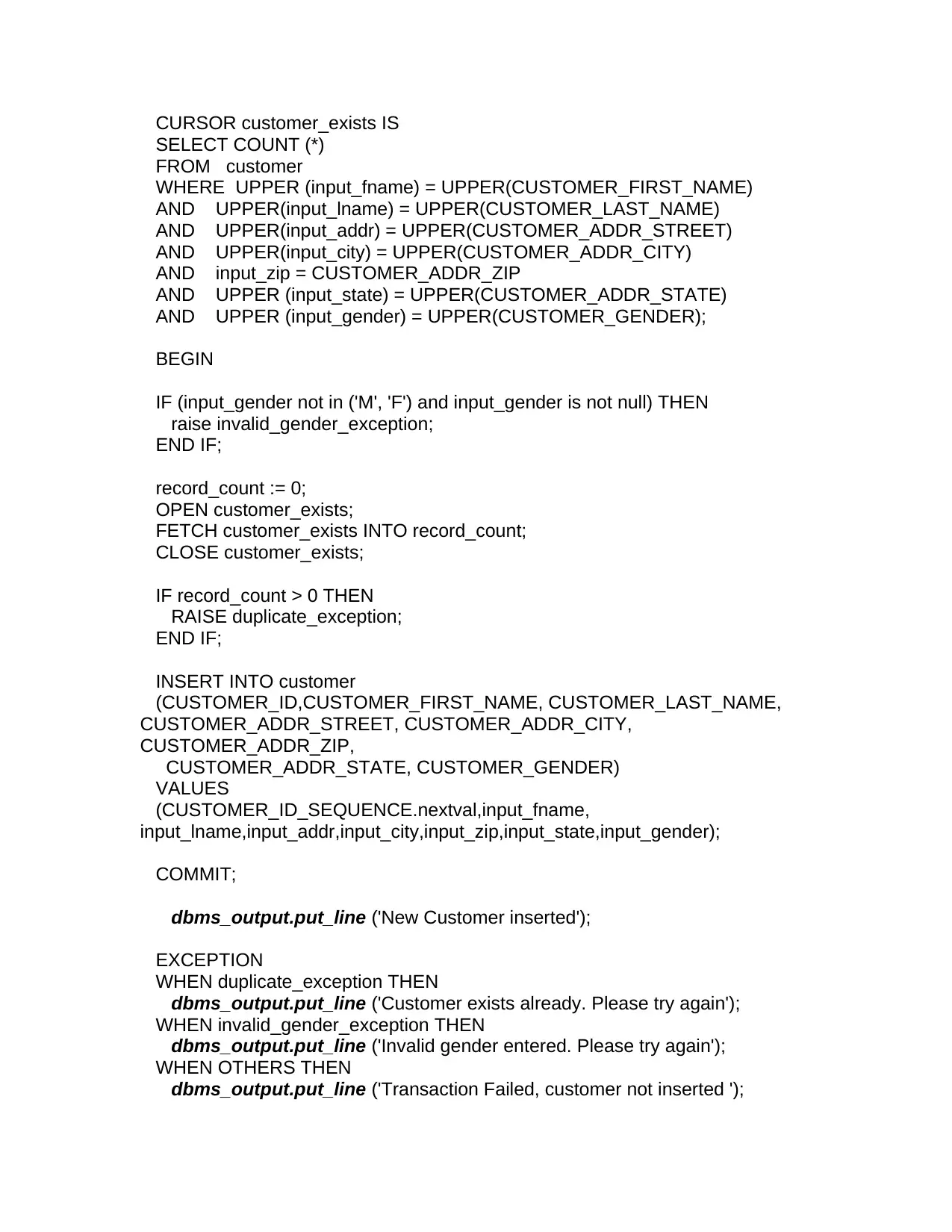

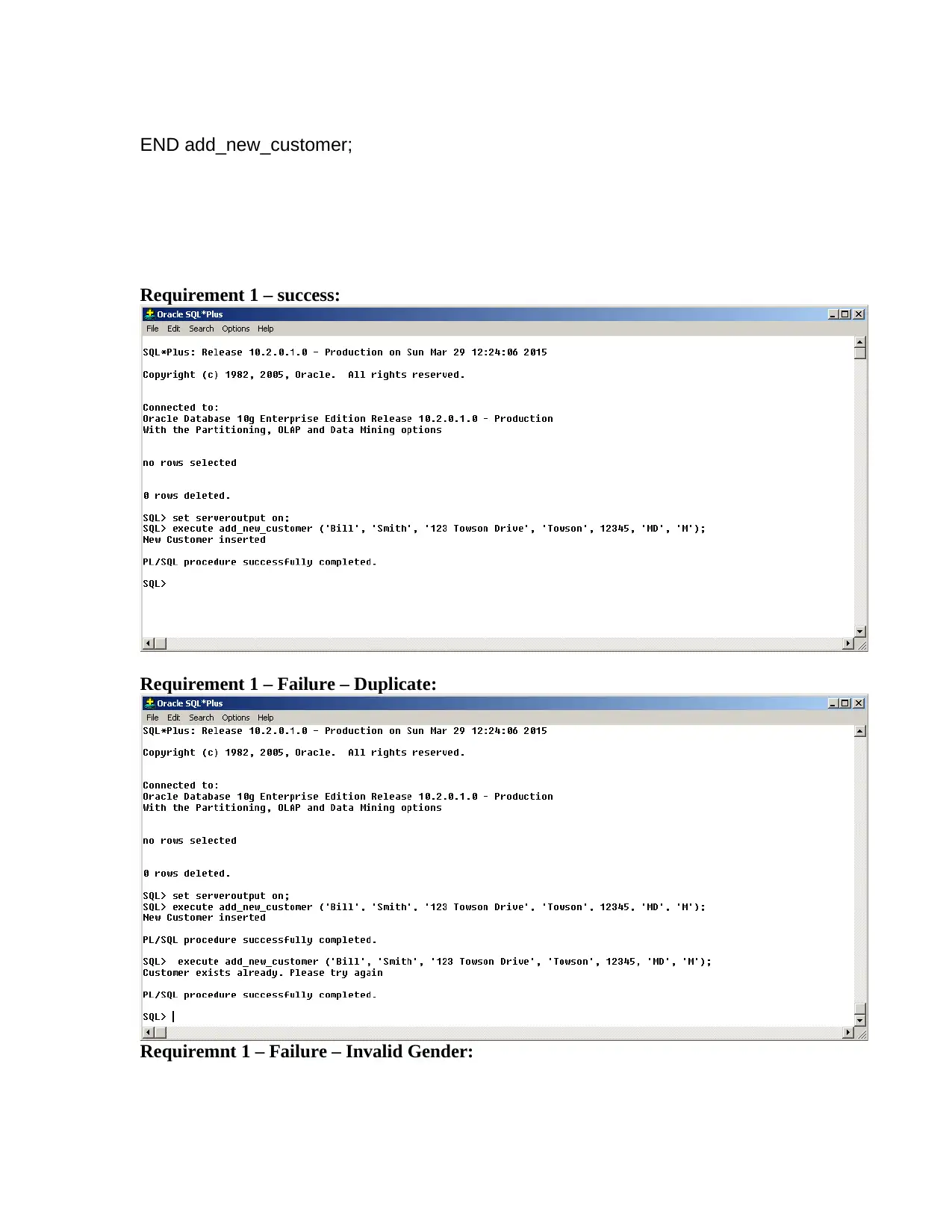
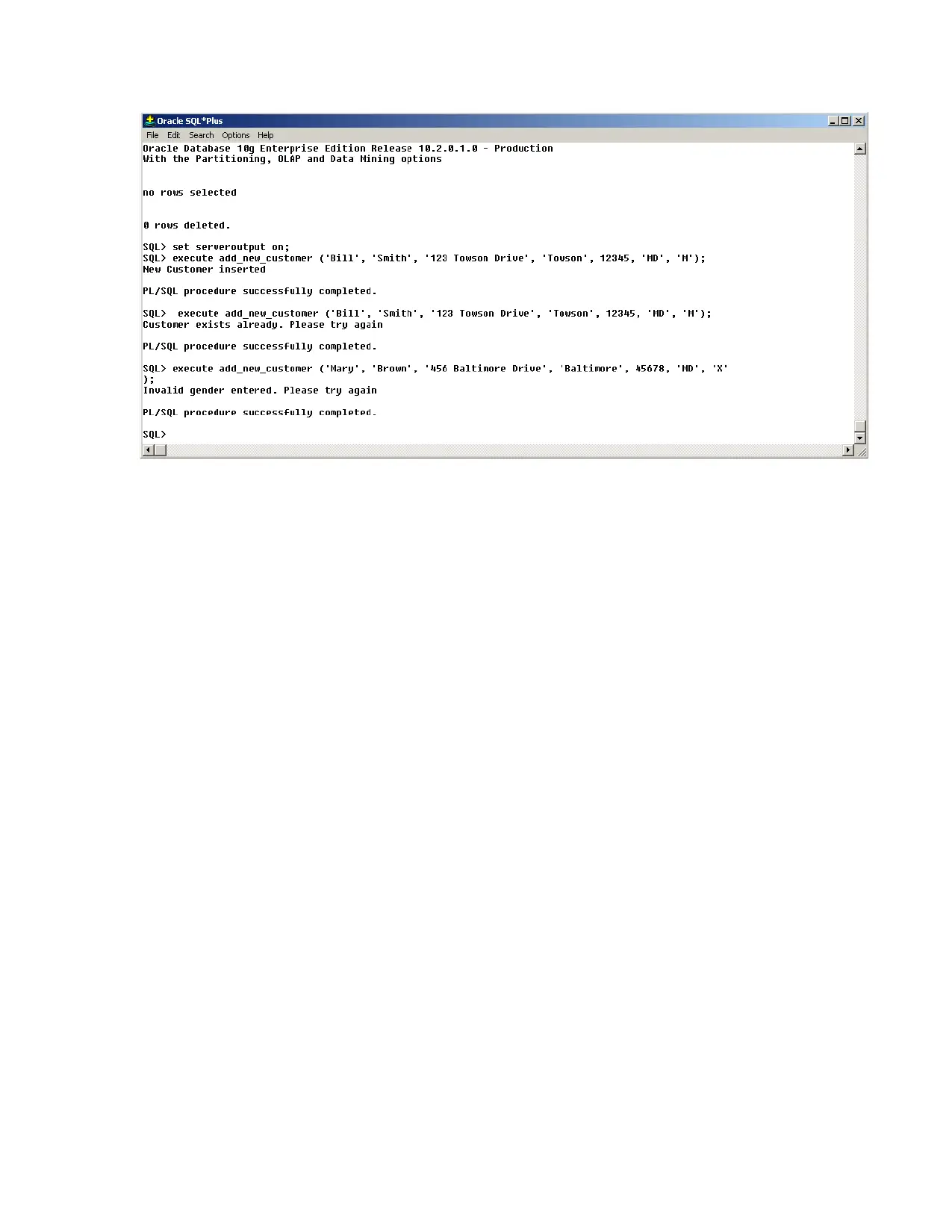






![[object Object]](/_next/static/media/star-bottom.7253800d.svg)